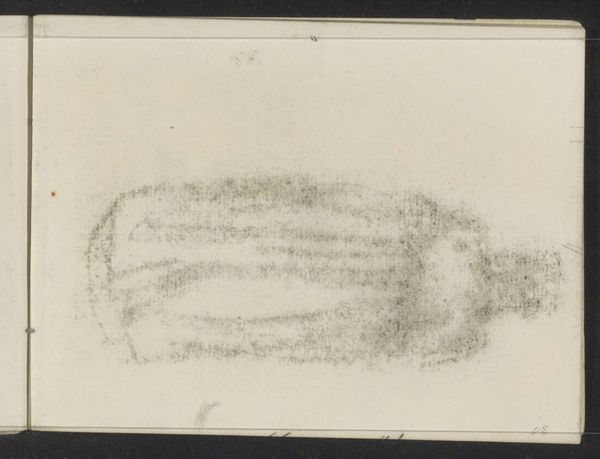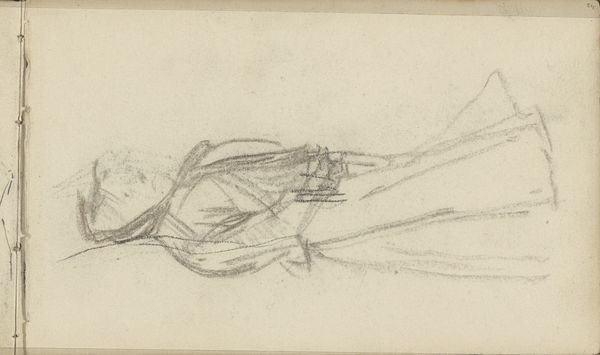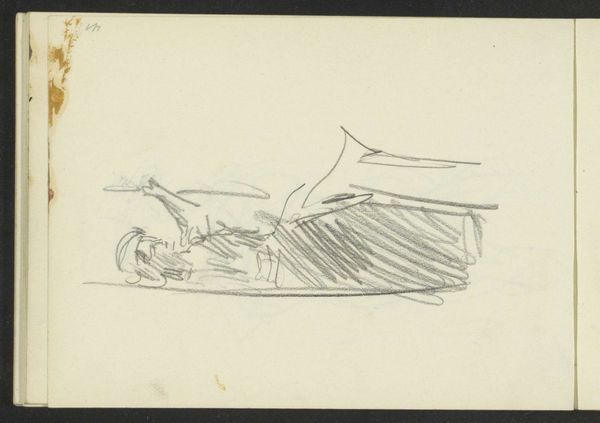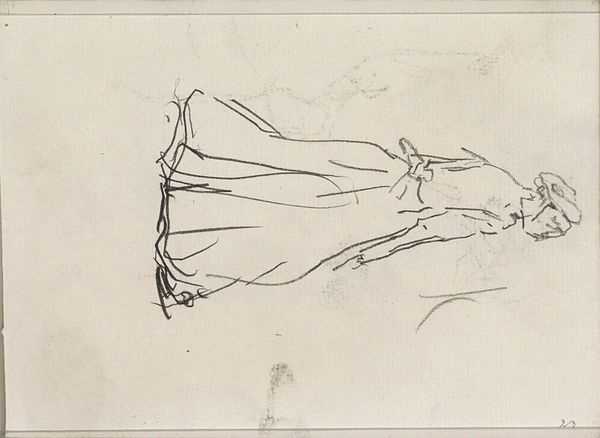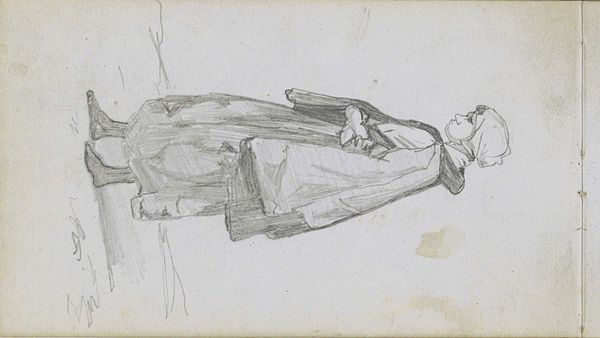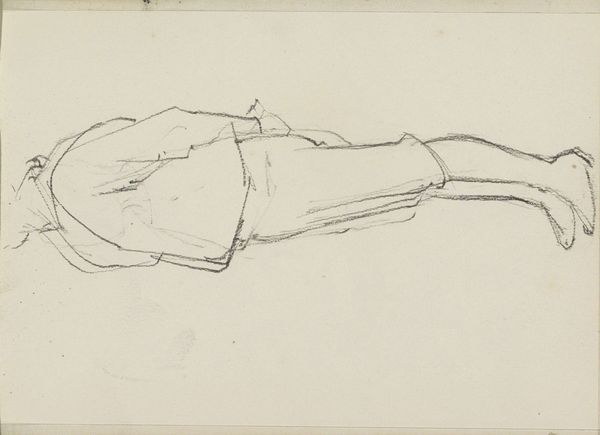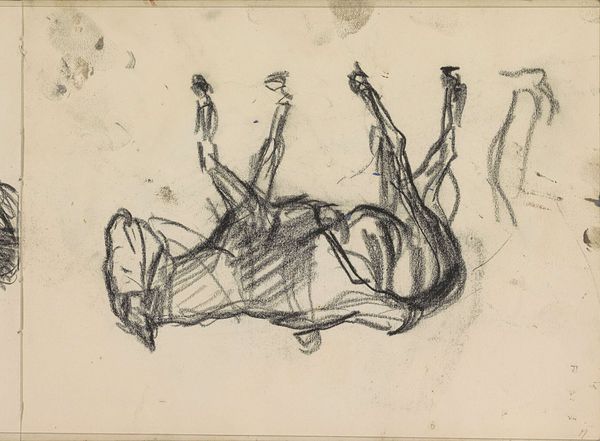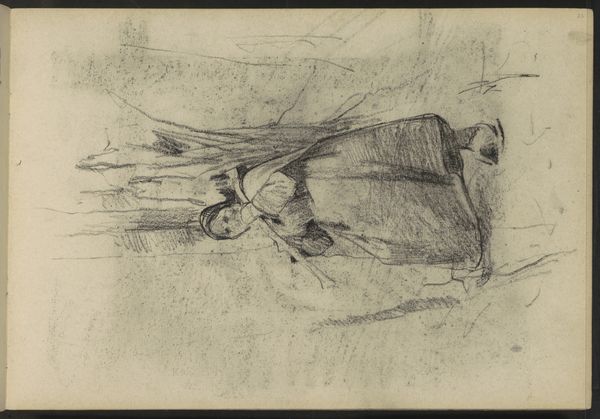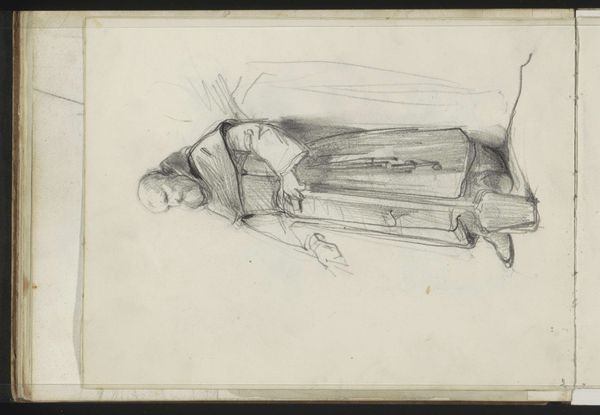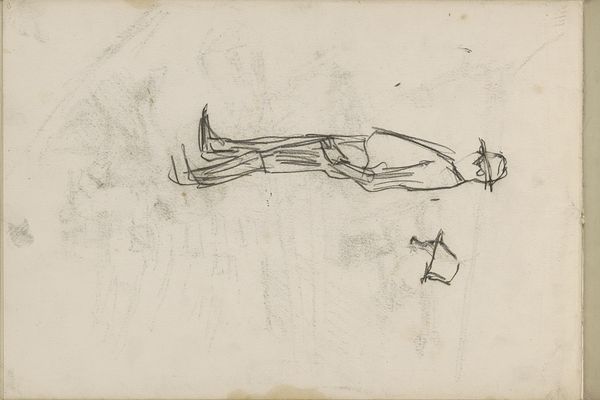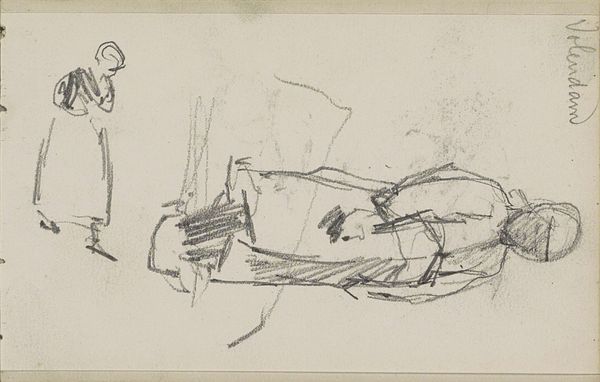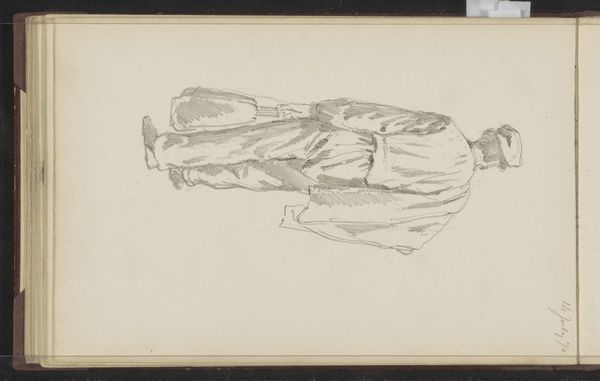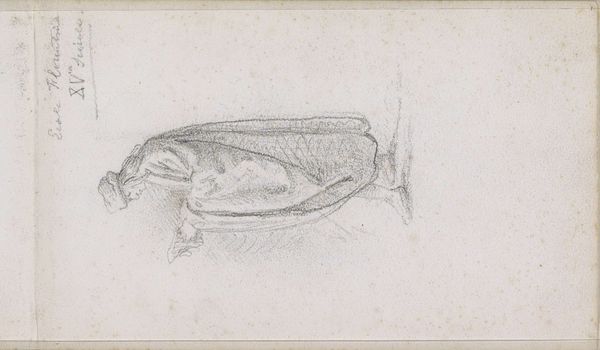
Copyright: Rijks Museum: Open Domain
Editor: This drawing by Isaac Israels, titled "Standing woman in a coat, seen from the back," likely dates sometime between 1886 and 1934. It appears to be a graphite sketch. It feels so simple, just a quickly jotted impression. What catches your eye? Curator: The immediacy of the graphite on paper is really striking. Think about the materiality: graphite mined, processed, formed into a tool – the pencil. Paper, manufactured from pulped plant fibers. These humble materials were incredibly accessible in Israels’ time and allowed for this kind of rapid documentation. Editor: So you're saying the ease of the medium is key? Curator: Precisely. And consider what the rapid nature of sketching implies about Israels’ engagement with his subject. This wasn’t about a lengthy commission, but more about capturing a fleeting impression. Were women mass-producing garments or perhaps working in textile factories at this time? How would their access to those goods have shifted perceptions about portraiture? Editor: I see. He is capturing the movement, not a posed representation. But how does that relate to its meaning? Curator: It challenges traditional ideas around high art, no? It values observation, and the skills in production. The subject and style seem almost secondary. By using common materials and a quicker method, Israels democratizes portraiture, right? Editor: Interesting! So it is less about the woman herself, and more about the action of observing, quickly and freely. Curator: Exactly. Consider it as less about the final object and more about understanding the context around labor, availability, and access to these raw goods. It's almost a commentary on artistic production itself! Editor: This perspective really shifted my understanding of the drawing. Thank you! Curator: And you've made me rethink my assumptions about what constitutes "finished" art. A great discussion!
Comments
No comments
Be the first to comment and join the conversation on the ultimate creative platform.
